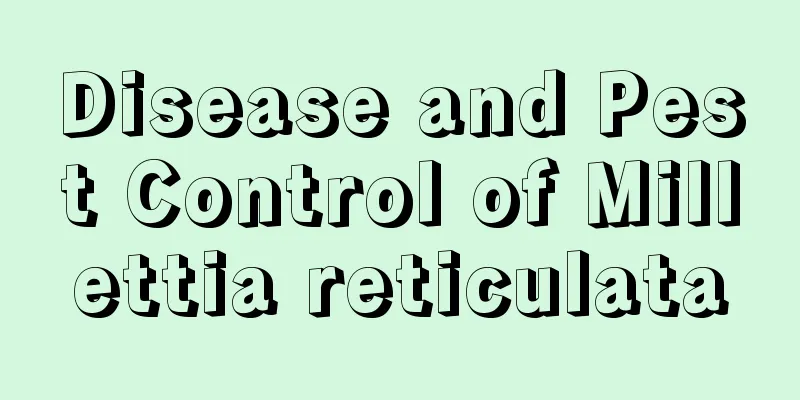Disease and Pest Control of Millettia reticulata

Diseases and their control of Millettia repensMillettia spatholobi is not prone to disease, but in the rainy season, there is heavy rain and the air is humid, which makes Millettia spatholobi prone to root rot. The root rot of Cistanche deserticola is basically caused by too much water. The soil is waterlogged, which makes it difficult for the roots to breathe and cause them to rot. The branches and leaves above the ground will also rot, wither, and even die due to the rot of the roots. When root rot occurs in Millettia reticulata, you can spray it with 1000 times diluted 50% carbendazim, which can have a certain therapeutic effect. If the root rot of Millettia reticulata is too severe to be cured, you can choose relatively intact and healthy branches to remove them for cuttings and re-propagate new Millettia reticulata. Pests of Millettia reticulata and their controlMillettia spatholobi rarely suffers from insect pests during its growth process, but it may be attacked by small cutworms and beetle larvae. The harm caused by cutworms and beetle larvae to Millettia reticulata mainly lies in the fact that these pests will bite the roots of Millettia reticulata, causing damage to the roots and affecting its normal growth. When these pests are found to be endangering the health of Millettia reticulata, chemical control can be adopted, that is, spraying the medicine directly, such as using 1000~2000 times of 40% Lorsban emulsifiable concentrate or 1000 times of 75% cypermethrin emulsifiable concentrate for spraying. However, chemical drugs have certain hazards, so it is recommended to choose safer methods to deworm. For example, some methods like garlic water and tobacco water can be used. Cutworms like sweet and fragrant substances very much. Sugar, honey and wine are all attractive to them and can be used to lure and kill them. This can not only kill pests, but also avoid causing hazards such as pesticide pollution. |
<<: Diseases and Pests of Kochia scoparia and Their Control
>>: Diseases and Pests of Dutch Chrysanthemum and Their Control
Recommend
When is the best time to plant potatoes?
1. When is the best time to plant? The time for p...
How often should I water the money tree in summer?
How often should money trees be watered in summer...
How to water the miniature coconut in winter
Watering the Miniature Coconut Tree in Winter The...
When to fertilize peonies? What kind of fertilizer is good?
Peony, known as the aristocrat among flowers , ha...
How to make good luck blossom
When does it bloom? The flowering period of wild ...
How Peonies Survive the Winter
1. Wintering Tips 1. Move indoors: Some areas in ...
How long does the ginseng fruit last? When does it usually bear fruit?
How long does the ginseng fruit last? The fruitin...
How to water Begonia
Watering tips for crabapple Begonia is a plant of...
How to grow large-leafed cassia in the north
1. Soil The soil in the north is usually alkaline...
How to grow osmanthus seedlings
1. How to grow seedlings 1. Soil: Choose fertile ...
Lupine Varieties
Lupinus luteum The flowers are yellow and fragran...
How to grow succulent plants
1. Fertilizer Generally, we make a lot of mistake...
How to raise chestnuts and what methods to use
Chestnut growing conditions The chestnut prefers ...
Can milk be used to water bougainvillea? The correct way to water bougainvillea with milk
Bougainvillea with milk Milk can be used to water...
How to grow old succulent plants
1. Suitable potting soil Generally speaking, if y...









